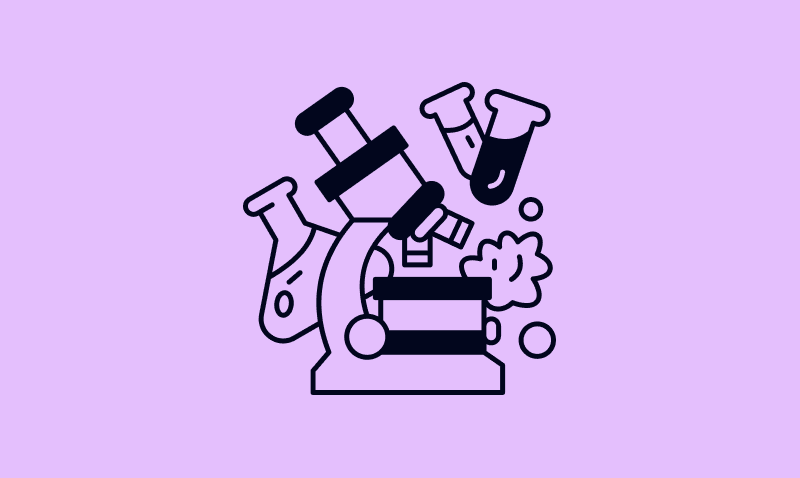I kept pausing the recording to take notes. Then I remembered I was supposed to be hosting the podcast, not auditing it for insights I could steal.
Caitlin Ferguson does embedded operations for founders—people, process, profitability, and partnership. She’s worked with over 100 founders throughout her career and helped them generate more than $20 million in value. When you have that much pattern recognition, you see things most of us miss.
The conversation was supposed to be a podcast interview. It turned into a masterclass.
Here’s what I learned.
The gap between playing with AI and actually using it
Most founders know AI matters. We’ve all opened ChatGPT, experimented, felt that spark of possibility. Then we hit the wall: how do you make AI operationally useful without hiring developers or buying expensive software?
Caitlin got tired of the same problem. She’d get an AI output and think, “Great, but no.” Then she’d give it more context. And more. She was basically just unblocking her own writer’s block, eventually doing the work herself anyway.
So she built what she calls a keystone document—a single framework that teaches AI how to work within your specific context. Platform-agnostic. No coding required. You update it once, and it works everywhere.
This is where it clicked for me: the gap between “playing with AI” and “AI transforming your operations” isn’t technical skill. It’s having a clear framework for how you work.
Caitlin’s keystone document has three parts.
1. Your values and quality standards
AI needs to know what “done” looks like for you. Not generically—specifically.
For Caitlin, work has to feel generous. It has to make people feel seen and exceptional. Those aren’t just nice words. They’re filters. If an AI output doesn’t hit that bar, it’s not done.
When you document your values, AI stops generating generic outputs and starts producing work that actually sounds like you.
2. Your problem-solving frameworks
You have mental models for how you make decisions. You probably haven’t written them down.
When you take on a new client, you’re running a fit assessment in your head. When you evaluate a project, you’re checking certain criteria. When you assess community members, you have a matrix for what makes someone a good fit.
Caitlin’s insight: write those frameworks down. Once AI knows your decision-making process, it can apply it consistently.
If you’re hiring, document what makes someone a strong candidate. If you’re building product, capture how you prioritize features. If you’re creating content, define what makes something valuable to your audience.
3. Examples of successful prior work
When you tackle something new, you’re unconsciously pulling from past situations. “This reminds me of that time…”
Give AI the same reference library.
If a project went well, save it as an example. If a piece of content resonated, add it to the collection. If a proposal won the deal, document why it worked.
With her keystone document, Caitlin can take a recording of a sales call, feed it to an LLM, and get a client-fit assessment, a list of aligned services, and a draft proposal using language the prospect actually used—all in 5 to 10 minutes.
No developers. No expensive software. Just a clear framework.
One founder told her they wished they’d built this when onboarding team members. It captures all the unwritten knowledge you carry—the stuff you’d normally have to explain in person.
It’s valuable beyond AI. But with AI, it becomes scalable.
The mistakes founders keep making
Caitlin has seen certain patterns play out across hundreds of founders. Two stood out in our conversation.
Getting stuck at the whiteboard
Founders want to think their way out of problems. They’ll architect the perfect system in their minds before taking action. It feels safe. It’s thrilling.
Caitlin put it this way: no battle plan survives first contact with the enemy.
She’s had to physically kick founders away from whiteboards and force them to go have real conversations, run beta tests, try things. She can’t think of a single time where the idea perfected at the whiteboard matched what actually gained traction.
It’s only through iteration that you discover what works.
Not letting go
Once you have a team, you struggle to delegate. You built this thing. You know every corner of it. If you did it yourself, it would be right.
But “right” isn’t the goal. Growth is.
Caitlin was firm on this: if you don’t learn to hand off work effectively, you won’t scale. You’ll burn out running an expensive hobby. She’s watched it happen.
This is where she introduced me to situational leadership—a framework that shows you how to progressively move someone from “I’m sitting next to them walking through every step” to “they fully own this, I’m hands off.”
It gives you a checklist for recognizing when someone is ready for more autonomy or when they need more scaffolding. Most founders either hold on too tight or throw people in the deep end with no support. Situational leadership maps the middle path.
The math makes sense: even if someone can only do something 80% as well as you, if you have another full-time person handling it, you get your time back. Your health improves. Your business actually grows.
Decision journaling: The framework I’m stealing
Caitlin shared something personal that I’m absolutely going to use.
When she was building her first business, she’d make a high-stakes decision and then spend days replaying it in her mind. Did she miss something? What if it fails?
She needed a way to stop second-guessing herself.
So she created decision journaling. The format is simple: I’m making this decision. Here’s the context. Here’s the outcome I think will happen based on what I know today. Then close the notebook and don’t look at it again until the outcome arrives.
Sometimes she discovered blind spots. But most of the time, she learned her instincts were sound. That built confidence.
Building a business means making decisions on limited information, constantly. Decision journaling trains you to trust your judgment and identify exactly where you need to grow.
I’m starting this immediately.
Why now is actually the golden age for founders
I asked Caitlin about the chaos of this year. Markets volatile. AI disrupting everything. So many founders asking, “Should I just go get a job?”
Her answer caught me off guard.
She thinks this is the golden age for founders who can move fast.
Yes, AI is disruptive. But disruption creates opportunity. When the internet emerged, everyone feared job loss. What actually happened? Net new jobs from problems the internet created that didn’t exist before.
AI will do the same. Founders who figure out how to integrate AI in unique ways, or who become experts in the new challenges AI creates, are first-movers in a massive shift.
The founders who sit on the sidelines waiting for clarity will miss the window. The ones who experiment now, build frameworks now, and learn by doing will be positioned when the dust settles.
You don’t need to be a technical expert. You need to be willing to try, learn, and iterate.
How to get started with a keystone document
If you want to build a keystone document like Caitlin’s:
Step 1: Write down what “done” looks like for you. What has to be true for work to feel complete? What do you value in outputs?
Step 2: Document one framework you use to make decisions. Start with something you do repeatedly—client assessments, content evaluation, project prioritization. Write out the criteria.
Step 3: Save one example of work that succeeded. Add context about why it worked.
That’s enough to start. You can refine and expand as you go.
The goal isn’t perfection. The goal is clarity. Once AI understands how you work, it becomes a tool instead of a time sink.
And if you’re struggling with delegation, letting go, or getting stuck in planning mode—Caitlin’s seen these patterns hundreds of times. The solutions are frameworks, not willpower.
Building a business doesn’t have to feel like constant chaos. You just need better systems.
This essay is adapted from my conversation with Caitlin Ferguson on the Generalist World podcast. [Listen to the full episode here.] Caitlin does embedded operations for founders—people, process, profitability, and partnership. Find her at coopilots.io or on LinkedIn. She’s also part of the Generalist World community.



